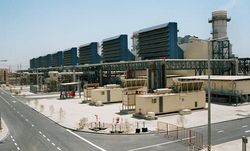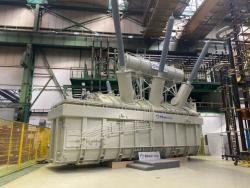
OR WAIT null SECS
© 2024 MJH Life Sciences™ and Turbomachinery Magazine. All rights reserved.
At-speed balancing facility in service for 20 years
Since September 1996, the at-speed balancing bunker in Sulzer’s Houston Service Center has been performing a critical service for clients from all over the world. As an integral part of the diagnostic and repair process for large rotating components, this facility offers plant owners and OEMs a specialty service that ensures continued reliability.
Over the past 20 years, Sulzer’s at-speed facility has balanced over 2,800 rotors. At-speed balancing significantly reduces the need for costly and time-consuming field balancing and is an essential part of improving the performance and reliability of rotating machinery. By minimizing vibration, equipment runs more smoothly which helps to maintain reliability and reduce servicing costs.
In practical terms, at-speed balancing ensures correct static and couple balance reducing the radial movement at both critical and running speeds of the rotating device. It also relieves assembly stress or ‘relaxation’ of the rotor by operating under full centrifugal stress prior to final balancing.
Progressive stacking and balancing of a rotor can provide a reasonably low-level of vibration using low-speed dynamic methods. This method has been used by Sulzer many times to fix a rotor with a poor vibration history.
However, progressive stacking and balancing does not assure a smoothly running, assembled rotor, because it does not account for the vibrations caused by system excitations as it is accelerated through the critical speed bands and up to its operating speed. These issues only become apparent with at-speed analysis; a service that is only available from a very select number of providers.
Using vibration diagnostics to analyze the radial vibration at the bearings and mid-span deflection ensures that the best balance is achieved at operating speed as well as minimizing the deflection and vibration amplitudes during ramp up and coast down.
The objective of any balance process should be to use the minimal number of weights and/or material removal to correct any imbalance in the rotor. Sulzer achieves this by using a dedicated vacuum chamber, “bunker”, and advanced electronics to achieve precision-balanced component. The bunker itself is designed to accommodate turbomachinery up to 30 feet (9 meters) in length, 8.5 feet (2.59 meters) in diameter, and up to 50,000 lbs (25 tons) in a vacuum chamber with speeds up to 40,000 rpm.
There are a number of situations where high-speed balancing is considered a requirement, either as part of general maintenance or at the conclusion of an overhaul. Some rotor designs are very long and flexible, which makes them more susceptible to vibration, while in certain other designs, high-speed balancing is considered essential.
Rotors that exhibit high vibration as they pass through their critical speeds or run at or near their critical speeds should be included in this group along with rotors that are used in high-revenue services and those destined for inaccessible locations, such as offshore facilities.



